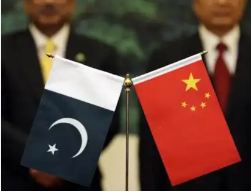In a defining moment of strategic realignment in South Asia, China has emerged from the shadows of subtle diplomacy to openly back Pakistan in its conflict with India. This public endorsement is not merely a gesture of regional alliance; it is a strong, calculated message to New Delhi and the broader global community: Pakistan is not alone, and China is ready to recalibrate the regional balance of power if necessary.
China’s support for Pakistan has traditionally remained implicit—economic cooperation, arms transfers, diplomatic cover in international forums, and coordination on multilateral platforms like the Shanghai Cooperation Organisation. However, the latest developments mark a stark shift from quiet diplomacy to visible and vocal alignment. The Chinese military’s cooperation with Pakistan during the recent India-Pakistan conflict has not only fortified Pakistan’s strategic standing but also allowed China to discreetly test and demonstrate its advanced warfare capabilities under real combat-like conditions.
This support to Pakistan should not be viewed in isolation. It is intricately linked to China’s broader geopolitical ambitions, especially concerning Taiwan. As tensions escalate across the Taiwan Strait, the Chinese leadership seems intent on drawing lessons from the subcontinental theatre—deploying, assessing, and refining its military technologies and operational readiness. The South Asian war has, in effect, become a proving ground for potential tactics that could be employed in a future confrontation with Taiwan and, by extension, the United States.
Furthermore, Beijing is playing a crucial role in stabilizing Pakistan’s western frontier by mediating between Islamabad and the Afghan Taliban. This effort is not rooted in altruism, but in cold strategic calculation. China’s massive investments under the Belt and Road Initiative (BRI), particularly the China-Pakistan Economic Corridor (CPEC), cannot flourish in a region mired in instability. Peace on Pakistan’s western border is imperative for uninterrupted economic integration and for the security of Chinese assets and personnel in the region. Thus, China’s involvement in regional diplomacy is as much about securing its economic stakes as it is about bolstering its strategic partner.
The messaging to India is unambiguous: any future engagement with Pakistan will also have to account for the potential involvement of a powerful northern neighbor. India now faces a more complex strategic equation—one that demands not only preparedness on its western border but heightened vigilance along the Line of Actual Control (LAC) with China.
China’s newfound openness in supporting Pakistan is a watershed moment. For decades, China preferred strategic ambiguity, carefully balancing its ties with India while cultivating Pakistan as a counterweight. That era seems to have ended. Whether this shift is permanent or a temporary posture in the evolving chessboard of global power politics remains to be seen. But for now, it signals a decisive moment in regional geopolitics.
The implications are profound. A China-Pakistan nexus that is openly military and political in nature will not only challenge India’s regional dominance but could also redraw the security architecture of South Asia. This alliance demands careful assessment—not just by India, but by the international community—because what unfolds in South Asia may soon echo across the Taiwan Strait.

















